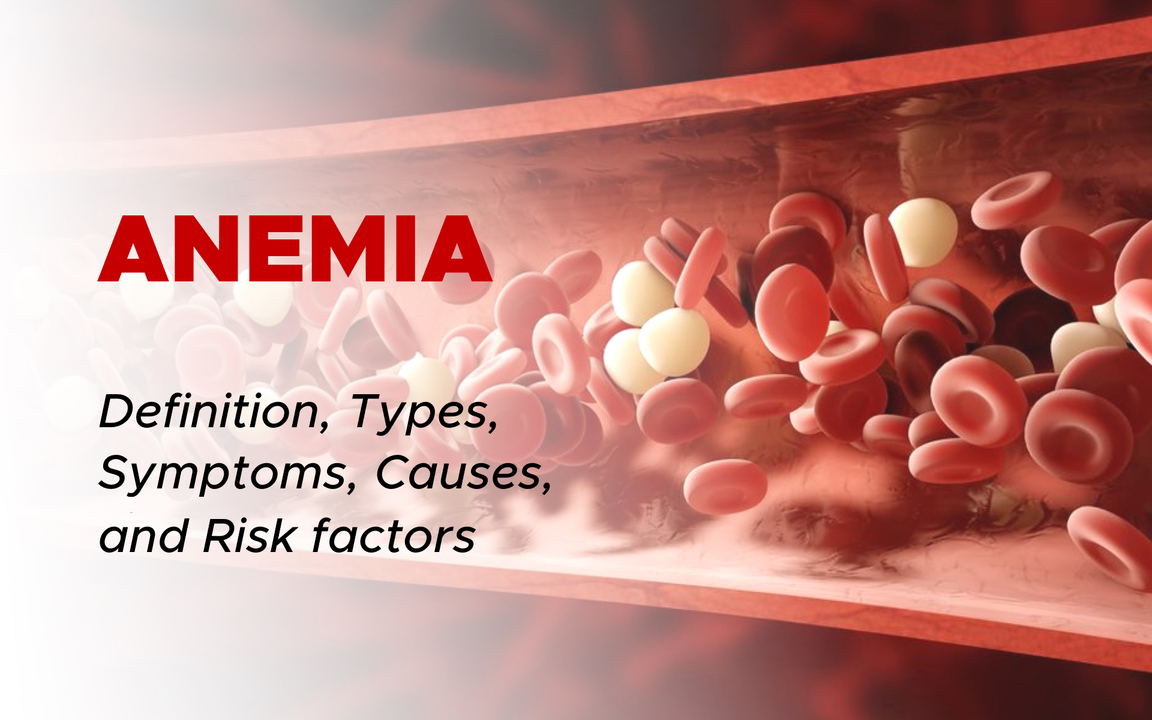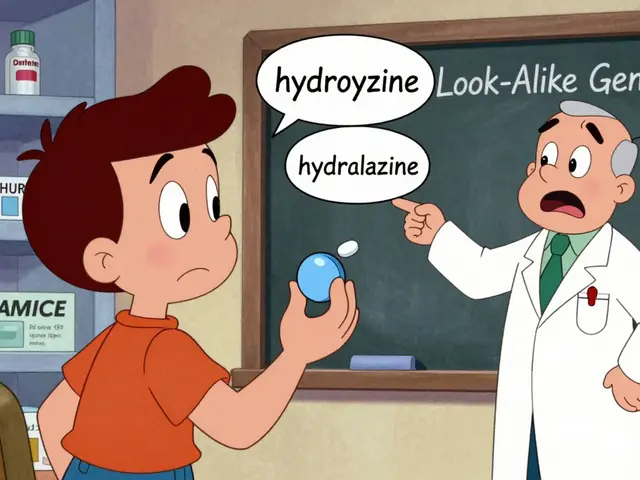Discovering the Root Causes of Anemia
Anemia is a common blood disorder that affects millions of people worldwide. It occurs when the body lacks enough healthy red blood cells to transport oxygen to the body's tissues, resulting in fatigue and weakness. Anemia can be caused by various factors, some of which include:
1. Iron deficiency: Iron is an essential mineral required for the production of hemoglobin, the protein in red blood cells that carries oxygen. A lack of iron can lead to a decrease in red blood cell production, causing anemia. This is the most common cause of anemia, and it can result from a poor diet, blood loss, or an inability to absorb iron properly.
2. Vitamin deficiency: Vitamins, such as B12 and folic acid, are crucial for the production of red blood cells. A deficiency in these vitamins can lead to a decrease in red blood cell production and anemia. This can be due to poor diet, certain medications, or an inability to absorb the vitamins properly.
3. Hemolytic anemia: This type of anemia occurs when red blood cells are destroyed faster than the body can produce them. This can result from inherited conditions, such as sickle cell anemia, or from external factors such as infections, certain medications, or autoimmune diseases.
4. Aplastic anemia: A rare and serious form of anemia, aplastic anemia occurs when the body's bone marrow is unable to produce enough red blood cells. This can be caused by radiation, chemotherapy, certain medications, autoimmune diseases, or inherited conditions.
5. Chronic diseases: Some chronic diseases, such as kidney disease and certain types of cancer, can affect the production of red blood cells, leading to anemia.
Understanding the root cause of anemia is the first step in determining the appropriate treatment plan.
Recognizing the Symptoms of Anemia
Anemia can manifest in various ways, depending on the severity of the condition and the underlying cause. Some common symptoms of anemia include:
1. Fatigue and weakness: A lack of oxygen-carrying red blood cells can result in the body feeling tired and weak, even after a good night's sleep or during light physical activity.
2. Pale skin: A decrease in red blood cells can cause the skin to appear pale or yellowish, particularly in the face, hands, and nail beds.
3. Shortness of breath: Anemia can make it difficult to catch one's breath, particularly during physical activity or even at rest.
4. Dizziness or lightheadedness: Insufficient oxygen in the body can lead to feelings of dizziness or lightheadedness, particularly when standing up or changing positions quickly.
5. Cold hands and feet: A decrease in oxygen-carrying red blood cells can result in poor circulation, causing the hands and feet to feel cold.
6. Rapid or irregular heartbeat: The heart may have to work harder to deliver oxygen to the body's tissues, resulting in a rapid or irregular heartbeat.
7. Headaches: Headaches can be a symptom of anemia, particularly if they are frequent or persistent.
If you suspect you may have anemia, it is essential to consult with a healthcare professional for a proper diagnosis and treatment plan.
Diagnosing Anemia: Tests and Procedures
Diagnosing anemia typically involves a series of tests and procedures to determine the cause and severity of the condition. Some common diagnostic methods include:
1. Blood tests: A complete blood count (CBC) measures the number of red blood cells, white blood cells, and platelets in the blood. This test can help determine the presence of anemia and its severity. Additional blood tests may be performed to measure iron, vitamin B12, and folic acid levels, as well as to assess the function of the kidneys and liver.
2. Physical examination: A healthcare professional may perform a physical examination to check for signs of anemia, such as pale skin, an enlarged spleen, or a rapid heartbeat.
3. Bone marrow biopsy: In some cases, a bone marrow biopsy may be performed to evaluate the production of red blood cells and to determine if there are any abnormalities in the bone marrow.
4. Genetic testing: If a hereditary condition is suspected, genetic testing may be performed to confirm the diagnosis and to identify any family members who may be at risk.
Once a diagnosis of anemia has been confirmed, the appropriate treatment plan can be determined based on the underlying cause and severity of the condition.
Effective Treatment Options for Anemia
There are various treatment options available for anemia, depending on the cause and severity of the condition. Some common treatments include:
1. Iron supplementation: For individuals with iron-deficiency anemia, iron supplements may be prescribed to increase iron levels and red blood cell production. These supplements can be taken orally or, in more severe cases, administered intravenously.
2. Vitamin supplementation: If anemia is caused by a deficiency in vitamin B12 or folic acid, supplementation may be prescribed to correct the deficiency and improve red blood cell production.
3. Blood transfusions: In cases of severe anemia, blood transfusions may be necessary to replace lost or damaged red blood cells quickly.
4. Medications: Certain medications may be prescribed to stimulate the production of red blood cells, such as erythropoietin for individuals with anemia due to chronic kidney disease.
5. Bone marrow or stem cell transplants: In cases of severe aplastic anemia or anemia caused by an inherited condition, a bone marrow or stem cell transplant may be necessary to replace the defective bone marrow with healthy cells.
Treatment plans should be tailored to the individual's specific needs and monitored closely by a healthcare professional to ensure the best possible outcome.
Managing Anemia Through Lifestyle Changes
In addition to medical treatments, lifestyle changes can also help manage anemia and improve overall health. Some recommended lifestyle modifications include:
1. Eating a balanced diet: Consuming a diet rich in iron, vitamin B12, and folic acid can help prevent and manage anemia. Foods such as lean meats, leafy greens, beans, and fortified cereals are excellent sources of these essential nutrients.
2. Exercising regularly: Engaging in regular physical activity can help improve circulation, increase oxygen delivery to the body's tissues, and boost overall energy levels. Be sure to consult with a healthcare professional before starting a new exercise routine, especially if anemia is severe.
3. Managing stress: Stress can exacerbate the symptoms of anemia and contribute to overall fatigue. Implementing stress-reduction techniques, such as deep breathing exercises, meditation, or yoga, can help improve overall well-being.
4. Avoiding substances that can interfere with nutrient absorption: Certain substances, such as caffeine and alcohol, can interfere with the absorption of essential nutrients, making it more difficult for the body to produce red blood cells. Reducing or eliminating these substances from one's diet can help improve anemia management.
By incorporating these lifestyle changes, individuals with anemia can improve their quality of life and enhance their overall well-being.
Monitoring and Preventing Anemia
Regular monitoring and preventive measures can help individuals manage their anemia and minimize the risk of complications. Some recommendations for monitoring and preventing anemia include:
1. Regular check-ups: It is essential for individuals with anemia to attend regular check-ups with their healthcare provider to monitor their condition and adjust treatment plans as necessary.
2. Vaccinations: Individuals with certain types of anemia, such as sickle cell anemia or hemolytic anemia, may be at an increased risk for infections. Getting vaccinated against common illnesses, such as the flu and pneumonia, can help protect against these infections and reduce the risk of complications.
3. Early intervention: If anemia is suspected or diagnosed, it is crucial to begin treatment as soon as possible to prevent the condition from worsening and to reduce the risk of complications.
By taking these preventive measures and working closely with a healthcare professional, individuals with anemia can effectively manage their condition and maintain a healthy, active lifestyle.

 Australia's Generic Market: PBS Overview and Impact
Australia's Generic Market: PBS Overview and Impact
 Patient perspectives: Living with prostate cancer and taking abiraterone
Patient perspectives: Living with prostate cancer and taking abiraterone
 Pharmacy Errors with Generics: How to Prevent and Fix Common Mistakes
Pharmacy Errors with Generics: How to Prevent and Fix Common Mistakes
 Chiropractic Care: Relief for Your Backache
Chiropractic Care: Relief for Your Backache
Brandon Burt
May 15, 2023 AT 00:45Reading this well‑crafted overview of anemia, I can't help but notice, with a sigh of mild disappointment, that while the article is thorough, it tends to meander through the same basic facts that even a casual high‑school biology textbook would cover, and, furthermore, the prose occasionally feels as if it were written by someone who is simultaneously trying to be exhaustive and yet unwilling to distill the information into digestible nuggets, which, in turn, forces the reader to wade through a sea of redundant explanations, full of commas, semicolons, and dashes that, while technically correct, create a cognitive overload, especially for newcomers seeking quick answers; moreover, the section on iron supplementation, though detailed, repeats the same dosage advice in slightly different wording, which could have been consolidated into a single, punchy paragraph, thereby saving the reader valuable time, and, finally, the lifestyle advice, though well‑intentioned, veers into the realm of generic health tips, lacking the specificity one might expect from a piece dedicated to a complex hematologic condition, so, in conclusion, while the article certainly covers all the bases, it does so with a verbosity that could be trimmed, clarified, and sharpened, allowing the essential points to shine through without the clutter of unnecessary elaboration, and that, dear readers, is the crux of my gentle critique.
Gloria Reyes Najera
May 25, 2023 AT 21:45America already knows the best iron foods, dont need no foreign advice.
Gauri Omar
June 5, 2023 AT 18:45Behold, the dramatic theater of blood, where crimson rivers falter and the weary soul trembles!
Every gasp for breath becomes a tragic aria, each pale complexion a canvas of despair.
Do not merely skim the surface; plunge into the abyss of causes, for only then can the hero reclaim vitality.
I implore you, brave reader, to confront the hidden culprits, for ignorance is a villainous shade that festers.
Rise, seize the iron, the B12, the folaic fire, and let the body sing once more.
Willy garcia
June 16, 2023 AT 15:45Great summary, keep it simple and stick to the basics.
zaza oglu
June 27, 2023 AT 12:45What a vibrant tapestry of information-truly a kaleidoscope of medical insight!
Every bullet point bursts with color, guiding the reader like a lantern in the night.
Let's celebrate this mosaic of knowledge and spread it far and wide.
Vaibhav Sai
July 8, 2023 AT 09:45Wow, this post really nails the essential aspects of anemia, from iron deficiency to chronic disease links!
It’s impressive how the author interweaves diagnostic steps with practical treatment options, making it a handy reference for both patients and clinicians.
The emphasis on lifestyle changes, like balanced diets and regular exercise, adds a holistic touch that’s often missing in purely clinical write‑ups.
Also, the clear breakdown of supplementation versus transfusion strategies helps demystify decision‑making for readers who might be overwhelmed by medical jargon.
Overall, a thorough, well‑structured guide that balances depth with readability-a real win for health education.
Lindy Swanson
July 19, 2023 AT 06:45Interesting points, but maybe we could've cut some fluff.
Amit Kumar
July 30, 2023 AT 03:45Thanks for the info! 😊👍
Crystal Heim
August 10, 2023 AT 00:45Overly detailed, not very helpful.